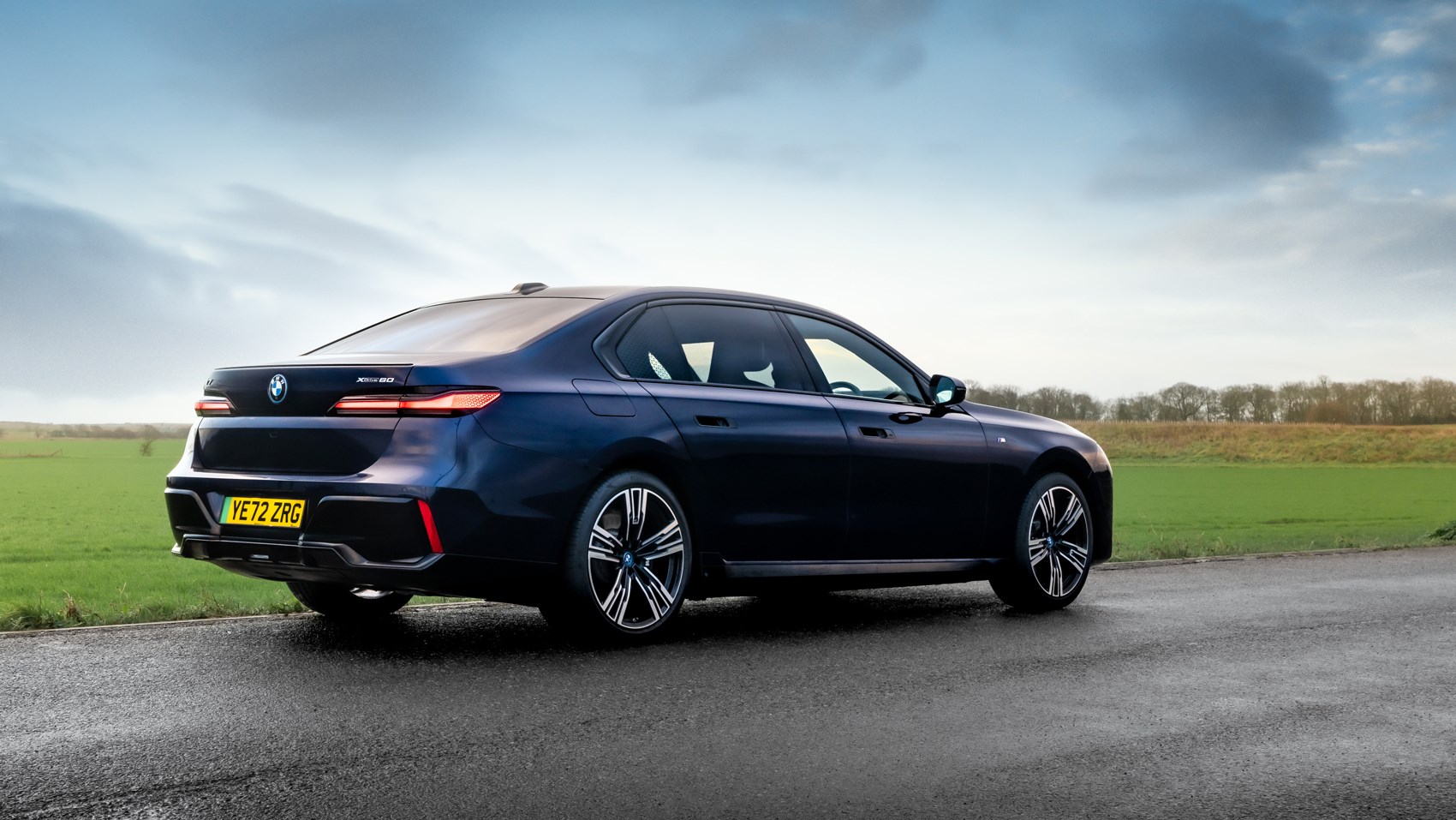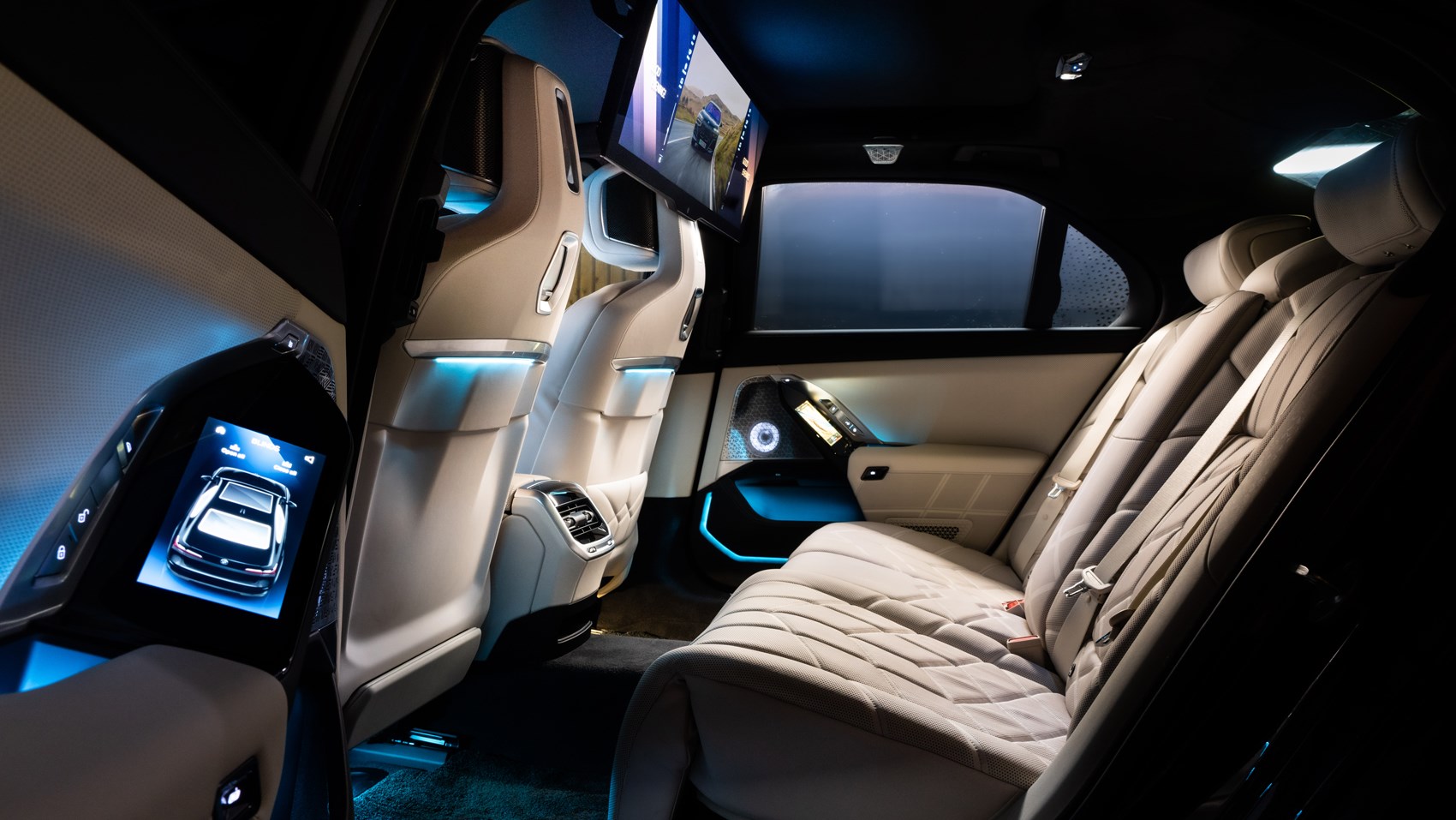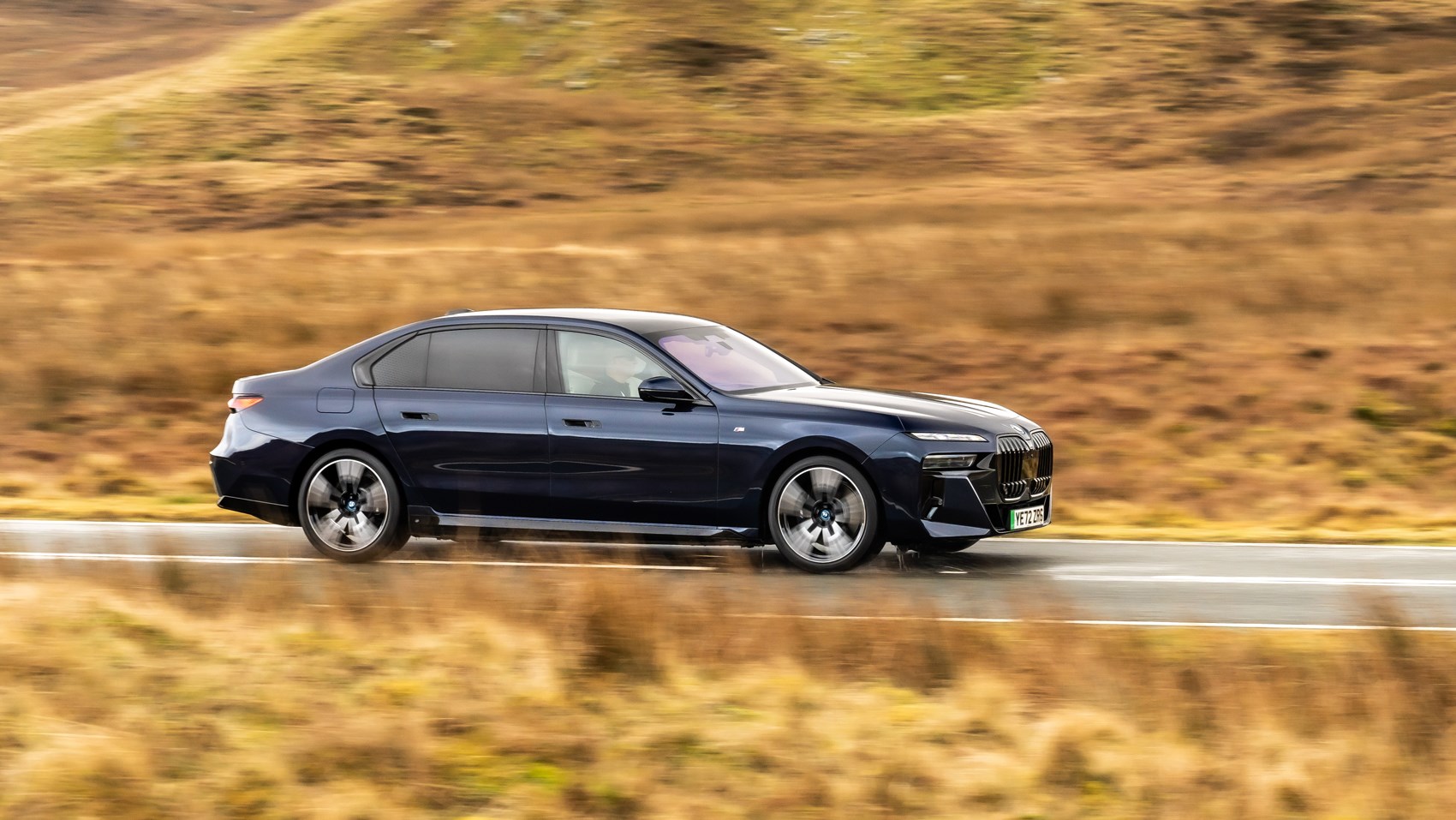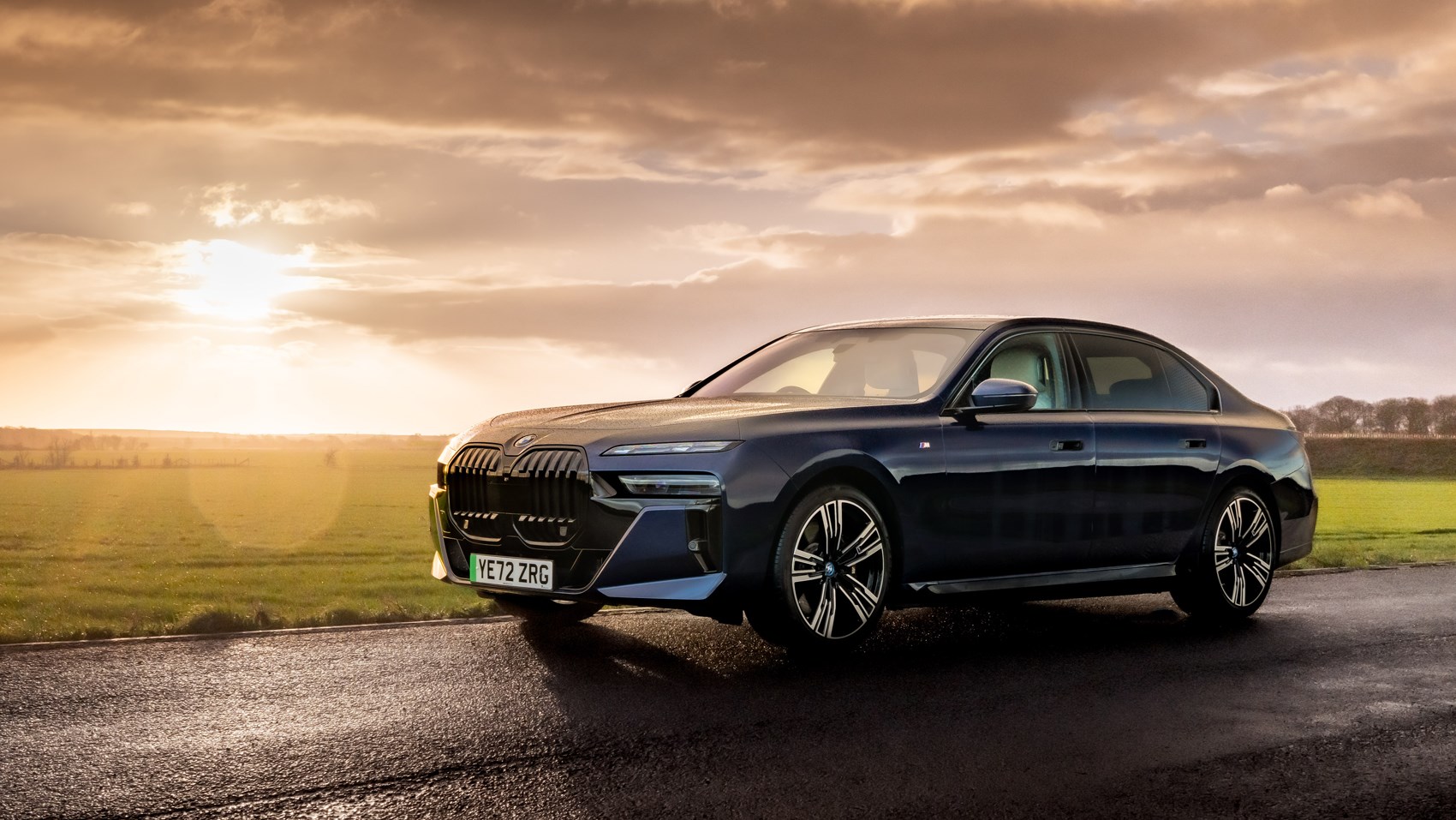► BMW i7 is firm’s flagship luxury EV
► 2.7 tonnes, 5.4m long, up to 650bhp
► Priced from £100k in the UK
The BMW i7 is the all-electric version of BMW’s flagship G70-era 7-series luxury limousine. We’ll get this out of the way early on: once you get past its challenging facial features, it’s one of the finest electric cars on sale today. We know because we’ve been living with one for the past half a year to uncover its strengths and weaknesses in great detail.
That sentence doesn’t come without caveats. At 5.4m long, over 2.7 tonnes and with prices starting from £100,205, it does nothing to silence the critics who say electric cars are too big, too bloated and too expensive. And with styling we might charitably describe as ‘striking’ (or less charitably as ‘heinously ugly’) it’s certainly a world away from the more restrained and handsome 7-series of old.
But in this case, excess certainly seems to pay off, resulting in one of the best luxury experiences this side of a Rolls-Royce. We’ve driven every version of the BMW i7 family extensively in the UK and abroad and lived with the i7 xDrive60 M Sport for an extended long-term test.

What’s the BMW i7 like to be driven around in?
This is one of those cars where starting the review anywhere but the back seat just feels plain wrong – so here goes. Like the rest of the 7-series range, the i7 has grown by 130mm in length, 48mm in width and 51mm in height over its predecessor, so as well as making it even more of a pain to navigate in underground car parks, it also means that good old-fashioned passenger space is in abundance.
Sink down into the BMW Individual Merino leather/cashmere wool seats and marvel at their comfort as you instruct the BMW Personal Assistant voice control to automatically shut your door for you (an option on the i7). Look up and you’ll spot the Sky Lounge panoramic glass sunroof – punctuated by LED backlit threads forming a diamond pattern inspired by the stitching on the quilted leather seats. Can’t quite see it properly? No problem. Simply activate the reclining function on the Executive Lounge seats, then put your feet up on the integrated leg rest. It’s like an Emirates First Class cabin in here, and that’s before we even get onto the tech.
We’ve all seen luxury cars with TV screens integrated into the headrests or even the seat backs, yet BMW has taken this one step further with what it calls the Theatre Screen (below). To activate it, you simply select the option in the BMW Touch Command unit (a small tablet screen built into the rear doors) and watch the screen whirr into position.

First, you’ll hear a unique sound composition created by filmscore royalty Hans Zimmer, then the sunblinds for the side windows, rear window and glass sunroof all gently close as the 31.3-inch 8K touchscreen heaves into view from its mounting in the roof lining. It’s a stunning thing to behold and includes Amazon Fire TV functionality meaning you can play games and watch programmes and films via popular apps such as Netflix and YouTube using onboard 5G connectivity.
Meanwhile, the accompanying soundtrack is either played through headphones or the stonking Bowers and Wilkins Diamond Surround Sound System. Boasting 4D audio, 36 speakers, 1965 watts and headrest integrated surround sound speakers, it delivers arguably the finest audio experience available in any car. Even with low-quality radio or iTunes tracks, the depth, clarity and detail in the resulting audio are superb.

Experiencing the rear-seat opulence of the 7-series for the first time is an incredible experience even for a seasoned road tester, yet is it perfect? Not quite. Those automatic doors – a wonderful novelty to show your friends but after a while they become tiresome. Then, there’s the Theatre Screen. Sure, it looks incredible, but it’s undoubtedly flawed to the point where BMW must have realised yet signed it off anyway.
You sit too close to the screen (its forwards and backwards movement is limited) and this means that while one side of the monitor is right in your face, the other is a good couple of feet away. Also, lowering it into position completely robs the driver of their view out of the rear-view mirror and, bizarrely, BMW has elected not to fit a camera-based virtual mirror (although it did unofficially hint that one may be on its way in future).
The BMW i7 Theatre Screen is a £4000 option.
What’s it like up front?
Swap seats, and the touchscreen is positively tiny compared to what you get in the back. Coming in at a ‘mere’ 14.9 inches, the BMW Curved Display iDrive infotainment system runs BMW Operating System 8.0 and works as the main control system for the car’s functions.
Next to it, and in front of the driver, is a 12.3-inch digital instrument display that replaces traditional dials, giving read-outs for key vehicle info as well as media, sat-nav, telephone and more.

Predictably for BMW’s iDrive, the wealth of functionality on offer means it’s intimidating at first (even if you have swallowed the user manual) but quickly becomes intuitive and easy enough to control. In fact, the sheer variety of ways in which you can control the car’s auxiliary functions is a talking point in itself, with voice activation, physical controls, touch screens and gesture control all overlapping (for example, if you want to increase the radio volume simply describe a rotary circular movement in the air with your index finger).
The new Interaction Bar is also worth a mention, even if we’re still not certain whether it’s a gimmick or functional piece of design. Made with a crystalline surface structure, it stretches across the front cabin and houses touch sensitive controls for the ventilation, hazard warning lights and glove compartment opening.
However, its main functions are a) to supplement the ambient lighting at nighttime (it can be illuminated in a variety of different colours) and b) provide important information to the driver. For example, if the driver or front passenger go to open the door and a moving object is approaching, the Safe Exit functionality will make the Interaction Bar flash red, warning the driver of the danger.
Other interior panels are less high-tech, but feature materials such as Fineline Lime open-pored matt fine wood, Mirror Oak Grey metallic high gloss and carbonfibre with silver threads. All of spectacular quality and assembled with meticulous attention to detail.
What’s the BMW i7 like to drive?
Yes, it has taken a while to get onto that bit hasn’t it? Happily, though, it’s almost as comfortable in the driver’s seat of the BMW i7 as it is reclined in the rear. New Comfort Seats provide excellent support (as well as heating, ventilation and massage, naturally) and the steering wheel (either available in two-spoke, flat-bottom rim or classical three-spoke style) is kept pleasingly free of too many buttons.

Set off in Comfort mode (several different driving presets are available via the My Mode selector) and the benefit of the electric drivetrain and complex suspension is immediately apparent. It’s eerily quiet – as you’d expect – and this is matched by the ride on the adaptive two-axle air suspension and electronically controlled adaptive dampers.
The regular i7 is no slowpoke. Even the least powerful, rear-drive eDrive50 manages 0-62 in 5.5 seconds – not bad, considering the car’s heft, and enough to upset the champagne flutes in the rear. xDrive60 models feel appreciably more urgent, and 4WD is no bad idea in something this heavy and powerful – 0-62mph takes 4.7 seconds.
The most powerful xDrive M70 car pulls this down to just 3.7 seconds, courtesy of a total system output of 650bhp and an insane 811lb ft of torque. Honestly, this level of power is borderline unpleasant, especially for rear passengers, and we suspect that after the first few full-bore launches the ‘Boost’ paddle behind the wheel that unlocks the car’s full potential will begin to gather dust.
Regardless of speed, it makes your average road feel like a snooker table. There’s an argument that any bumps or lumps in the surface are being flattened by the sheer weight of the i7 and while it may be a flippant, the outcome is of a similar effect. Go past 70mph on an exposed piece of motorway and there’s a tiny element of wind noise from the wing mirrors, yet otherwise it’s totally serene in the i7. No mean feat considering the total lack of engine thrum that would usually provide cover for road, chassis, wind and all other noise.

eDrive50 and xDrive60 models are slightly floatier than the M70, which has firmer suspension though not to the point where road imperfections begin to filter through. If anything, it’s the nicest of the three, feeling a little more connected to the road without sacrificing ride quality or refinement.
Driver assistance systems are predictably vast in number with front-collision warning, lane change warning, rear collision prevention and active cruise control being a small sample. Manoeuvre Assistant is also included and makes parking the car in tight spots easier. Drivers can set the car to remember a manoeuvre into a parking spot (say, in an underground parking garage) and when that start location is reached again in future the car can repeat the manoeuvre. The i7 takes care of the brakes, accelerator, steering and gearshifts and, from 2023, can even be operated on the My BMW App.
Anything else?
If you’ve read all of the above, you can hopefully appreciate the i7’s ability is a luxury car. However, what’s perhaps even more impressive is that it still drives like a BMW should. The steering is direct and brilliantly judged, the body control excellent and the performance from the electric powertrain should leave most ICE sports cars for dust.
Power comes from a 101.7kWh battery that feeds two electric motors – one on the front axle and one on the rear (making an electric version of BMW’s xDrive all-wheel drive system). Total power and torque output is 536bhp and 549lb ft respectively, allowing 0-62mph in 4.7 seconds and a top speed of 149mph. Range is up to 388 miles, while DC charging up to 195kW means 106 miles of range can be added in just 10 minutes.

Some may prefer the low burble of a big, petrol engine to really complete the feel of luxury, yet the i7’s EV powertrain feels perfectly suited. Not only does its natural refinement shine through, but the performance on offer is also hugely impressive and exceptionally well-engineered.
BMW i7 – Verdict
On the face of it, the BMW i7 is yet another super-expensive, controversially styled, ultra-heavy EV that we’ve seen crop up countless times over the last few years. Yet to write it off for those reasons really would be an injustice of proportions matched only by the car’s radiator grille.
Granted, things like the automatic doors and Theatre Screen are solutions to a problem that never existed in the first place, but the i7 gets away with this because the fundamentals of modern luxury – space, power, tech, comfort – are all gloriously executed. What’s more, BMW has clearly gone to considerable effort to retain exemplary driving dynamics in the i7 – the kind that arguably aren’t necessary but just go to show the level of thought and engineering that’s been put into this car.
The mid-spec is the sweet spot – the xDrive60 car isn’t hugely more expensive than its lesser 2WD sibling but feels like the best match to the i7. The flagship M70 model is fun, at first, but it’s hugely expensive and doesn’t really improve on the rest of the car.
As a technical showcase it’s supreme, as a luxury car it’s bettered only by sister company Rolls Royce and as an EV it’s a convincing showcase for the future.